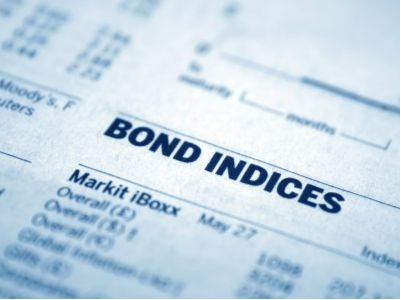Morgan Stanley Fund: What opportunities are there in the bond market in the last two months of 2024?
2024-11-04 18:52
Currently, in the context of coordinated monetary policy and accelerated fiscal spending logic, short and medium-term debt assets have high certainty, while long-term assets have trading and gaming opportunities. Interest rate bonds and perpetual bonds can balance odds and liquidity, and trading opportunities may be seized at the appropriate time.
Morgan Stanley Fund stated in its article that, as of now, in the context of monetary policy coordination and accelerated fiscal spending logic, short-term debt assets have high certainty, while long-term assets present trading and gaming opportunities. Interest rate bonds and perpetual bonds can balance odds and liquidity, and may be traded opportunistically.
Looking ahead, with only 2 months left in the year, the focus is on the intense U.S. election, and domestic assets are expected to respond to domestic policy expectations and the pace and extent of policy responses. Class assets will experience increased volatility, as the size of the fiscal policy during the National People's Congress session has already been partially anticipated. It is expected that the pace of supply in the year will significantly exceed expectations. Additionally, due to the effective introduction of central bank repurchase policies, the 6-month term rate is still lower than the current term deposit rate by 5 basis points. Therefore, it is expected that there will be a high degree of coordination between monetary and fiscal policies. With the early implementation of quantitative easing, the recent 1-year national bank deposit rate of around 2.0% can be considered a recent peak. By the end of November, as fiscal spending is implemented, it is expected that liquidity will become systematically loose, further opening up the lower limit for term deposit assets to operate. In addition, a political bureau meeting is expected in early December, followed by the Central Economic Work Conference in mid-December, which will set the tone for next year's economic development strategies and future expansive fiscal plans. It is anticipated that there will still be gaming opportunities in the bond market.
The environment of low-interest-rate bonds tends to amplify volatility itself. Low interest rates create low safety cushions, and in a low interest rate spread environment, institutions are increasingly extending duration and credit exposure, implying greater volatility risk. With the development of internet platform equity and the net value transformation of bank wealth management, the features of fund instrumentalization and short-term liability are becoming more pronounced.
Taking the example of short-term bond funds that have developed quickly in recent years, as of the end of the third quarter of 2024, the scale of short-term bond funds stood at RMB 1.28 trillion, a decrease of RMB 212 billion from the previous quarter. Short-term bond funds, due to their focus on balancing returns and drawdowns, have been favored by retail customers as savings interest rates have declined in recent years. Short-term bond funds can still enjoy capital gains under the broad rate decline scenario, while the loose funds have made drawdowns controllable. However, in recent years, factors such as the deepening experience of retail customers in wealth management net value, retail customers purchasing bond funds at a faster rate than institutional customers, and the rapid dissemination of professional information, have led to unstable liabilities of retail customers. In addition, in pure bond funds, data shows that the scale of bond funds held by financial subsidiaries reached RMB 1.1 trillion in mid-2024, and it is estimated that the remaining amount was around RMB 700-800 billion by the end of October 2024. This shows that after the development of net value transformation in the past two years, financial subsidiaries have enhanced their market prediction capabilities, and redemptions have become more frequent and forward-looking. They have increased their cash holdings to over 20%, indicating that financial subsidiaries have higher demand for liquidity safety cushions.
In the past two years, due to the deep-rooted logic of urban investment bonds and asset shortage, the spread has flattened, and the term spread and credit spread seem to have lost their pricing anchors. The appropriate spread level is detached from historical levels, making it difficult to price, which troubles every institution looking for safe returns. The three axes of the bond market: coupon, leverage, and duration, have also faced challenges this year, as non-bank financing rates remain in the 2-digit range, and 5-year interest rate bonds have all returned to single-digit levels. Institutional preferences for allocation are clearly stratified, and the arbitrage value has disappeared.
Since the end of September, influenced by proactive policies, the equity market has anticipated a bull market, while the bond market has experienced two relatively rapid shocks due to the reversal of liabilities and risk preferences. Compared to the two previous redemption waves, this time is equivalent to an accelerated version of the fourth quarter of 2022 bank wealth management redemptions. The market is more experienced in dealing with this, with assets fluctuating before liabilities. In terms of adjustment range, for example, the 5-year AAA yield has increased by about 32 basis points since its lowest point on August 5th, while the 5-year AA yield has increased by about 67 basis points, returning to the level in early April. Assets that are primarily driven by non-bank demand, the credit spread expansion is evident.
The DR007 has stabilized and decreased to a level near 1.6, while the income center of 2-year AA+ assets with convertible bonds attributes is at 2.36%, showing obvious arbitrage value. Short- and medium-term debt assets have low volatility and high certainty, while long-duration assets still have room for continued policy and meeting gaming. Non-bank liabilities still demand profit protection by the end of the year. In the short term, the direction is more inclined towards fluctuation. In the short term, long-duration assets still need to balance odds and liquidity, with interest rate bonds and perpetual bonds being preferable options.
RECOMMEND

AMAC: In January, 137 new asset-backed special plans were filed, with a total scale of 1122.64 billion yuan.
26/02/2025

Schroder Investment: Investors should consider allocating funds to securitized credit and insurance-linked securities.
26/02/2025

Reuss County Asset Annual Reflection: Policy Tipping Point is very clear. The semiconductor industry in 2025 is a game for the brave.
26/02/2025


